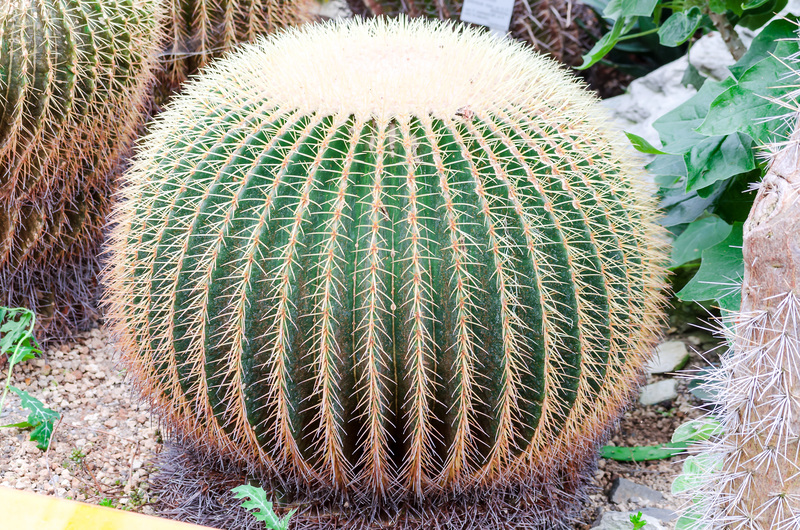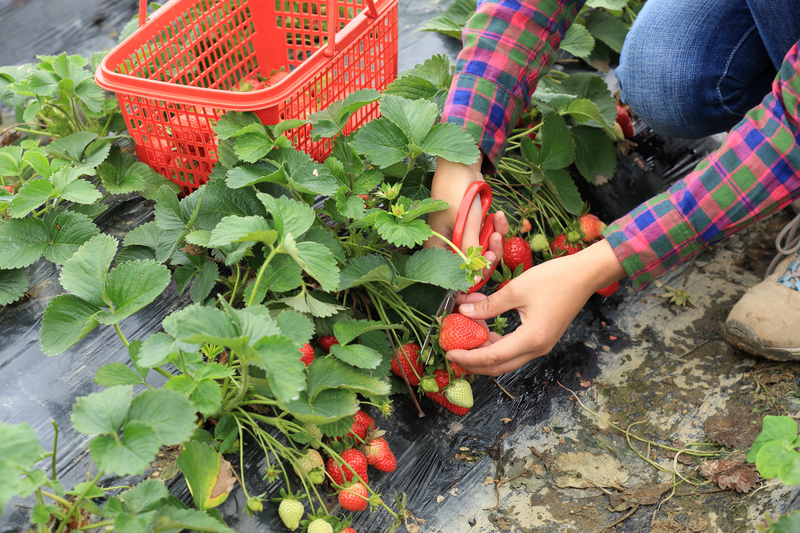Sowing Success: How to Create a Herb Garden at Home
Posted on 26/05/2025
Sowing Success: How to Create a Herb Garden at Home
Are you fascinated by the fragrance of fresh basil, the zest of mint, or the culinary charm of rosemary? Growing a herb garden at home is more than just a trend--it's an immensely rewarding journey that enhances your cooking, beautifies your space, and promotes healthy living. Whether you're a budding gardener or a seasoned green thumb, this comprehensive guide will walk you through everything you need to know to start your own herb garden and guarantee sowing success.
Why Start a Home Herb Garden?
Herbs have been cherished for centuries, not only for their culinary uses but also for their health benefits and aromatic properties. Cultivating a herb garden at home brings a wealth of advantages:
- Freshness on Demand – Harvest herbs minutes before using them for maximum flavor and nutrition.
- Cost-effective – Home-grown herbs reduce your grocery bill and eliminate waste.
- Eco-friendly – Reduce your carbon footprint by growing herbs at home instead of buying packaged varieties.
- Decorative Appeal – Herb gardens can add greenery and charm to any kitchen, balcony, or yard.
- Therapeutic Value – Gardening is a proven stress-reliever that fosters mindfulness and well-being.

Choosing the Perfect Spot for Your Herb Garden
The foundation of sowing success with your home herb garden lies in finding the right location. Here are the key considerations:
Sunlight Requirements
Most herbs thrive on sunlight. In general, herbs require 6-8 hours of direct sunlight per day. If you are planning an indoor herb garden, place your pots on a south-facing windowsill. For outdoor spaces, choose a spot that receives ample natural light. Some shade-tolerant herbs, like mint and parsley, can handle fewer hours of sun.
Space Considerations
You don't need a huge garden to grow a herb garden at home. Options include:
- Window boxes or planters
- Hanging baskets
- Patio containers
- Vertical herb gardens
- Traditional garden beds
Even a small apartment balcony or kitchen counter can host a flourishing herb oasis.
Soil and Drainage
Herbs prefer well-draining soil. Select potting soil designed for herbs or add perlite, sand, or compost to enhance drainage. Ensure your pots or beds have drainage holes--water-logged roots are the enemy of healthy herbs.
Essential Steps to Start Your Own Herb Garden
Ready to begin? Follow this step-by-step approach for sowing success in your herb garden at home:
1. Decide: Seeds or Seedlings?
You can start your herb garden from seeds or purchase seedlings from a nursery:
- Seeds – Offer a wider range of varieties and are more economical, but require patience and extra care as they germinate.
- Seedlings – Perfect for beginners; these young plants give you a head start and faster results.
*Tip: Some herbs, such as basil, chives, and oregano, are easy to start from seed, while others like rosemary and bay laurel are best purchased as seedlings.
2. Select Your Herbs
Choose herbs that match your cooking preferences, lifestyle, and growing conditions. Here's a list of popular herbs to grow at home:
- Basil: Essential for Italian cooking.
- Mint: Perfect for teas and desserts; thrives in pots to contain its growth.
- Parsley: Versatile for salads and garnishes; prefers cool, moist places.
- Rosemary: Woody perennial with aromatic leaves.
- Thyme: Hardy and drought-tolerant, ideal for roasting and stews.
- Cilantro: Popular for salsas and curries, prefers cooler temperatures.
- Sage: Earthy flavor for meats and stuffings.
- Oregano: Mediterranean staple.
- Dill: Pair with fish or pickle recipes.
- Chives: Mild onion flavor, easy to grow indoors or out.
3. Prepare Your Containers or Beds
When planting in pots, choose containers with drainage holes and consider placing small stones at the bottom to prevent soil blockage. Fill with a mix of potting soil and compost.
For outdoor beds, loosen the soil and enrich it with organic matter. Remove weeds and ensure proper drainage.
4. Planting: The Right Way
- Seeds: Follow packets for depth and spacing. Water with a gentle spray until seedlings emerge.
- Seedlings: Dig a hole slightly larger than the root ball, place in the soil, and firm gently. Water well.
Tip: Group herbs with similar needs together for easier care.
Caring for Your Home Herb Garden
To ensure lush growth and maximum yields, proper care is crucial. Here's how to keep your herb garden at home thriving:
Watering
- Most herbs prefer soil that's moist but not soggy. Overwatering is a common mistake.
- Check soil moisture by touching the soil – only water when the top inch feels dry.
- Early morning is the best time for watering, reducing evaporation and leaf diseases.
Feeding
- Use a balanced, organic fertilizer or compost every 4-6 weeks.
- Avoid heavy feeding – too much fertilizer can reduce flavor intensity.
Pruning and Harvesting
- Regular harvesting stimulates new growth. Pinch or snip leaves above a leaf node.
- Don't remove more than one-third of a plant at a time.
- Remove flower buds from annual herbs to prolong leaf production.
Pest and Disease Management
- Encourage natural predators like ladybugs and use organic pesticides if necessary.
- Watch for aphids, spider mites, and powdery mildew.
- Good air circulation and avoiding overhead watering helps prevent fungus.
Creative Ideas for Setting Up a Herb Garden at Home
Indoor Herb Gardens
Making use of your kitchen windowsill or a dedicated shelf, you can grow herbs indoors year-round. Choose compact containers and rotate them for even sun exposure. Popular choices: basil, parsley, chives, and thyme.
Vertical Herb Gardens
No space? No problem! Try creating a vertical herb garden by mounting planters on a wall or using a ready-made vertical gardening system. This is ideal for balconies, patios, or even indoors.
Container Herb Gardens
Mix and match decorative pots of varying sizes for a portable and visually appealing herb container garden at home. Clay pots, mason jars, or recycled containers can all serve as unique herb planters.
Best Herbs for Beginners
Some herbs are notoriously easy to care for and make perfect starter plants for your first herb garden at home:
- Basil – Fast-growing and great for beginners.
- Chives – Hardy and regrow quickly after cutting.
- Mint – Vigorous and resilient; keep it in a pot.
- Parsley – Adaptable to various conditions.
- Thyme – Low maintenance and drought-tolerant.
These herbs can help you gain confidence and experience growing herbs at home before expanding your collection.
Harvesting and Storing Your Home-Grown Herbs
Once your herb garden is in full swing, regular harvesting will keep plants healthy and productive. Here's how to harvest and store fresh herbs:
- Harvest in the morning for the best flavor before the sun evaporates essential oils.
- Use sharp scissors or pruners for clean cuts.
- Air dry, dehydrate, or freeze surplus herbs for long-term use.
- Store dried herbs in airtight containers away from heat and light.
- Freshly cut herbs can be kept in a glass of water on the counter for several days.
Common Problems and How to Troubleshoot
Even the most attentive gardeners face challenges. Here are typical issues and solutions for growing a successful herb garden at home:
- Leggy Growth: Not enough light--move your herbs to a sunnier spot.
- Yellowing Leaves: Overwatering or poor drainage--let the soil dry, use well-draining pots.
- Poor Flavors: Overfertilizing--use moderate fertilizer and don't overwater.
- Wilting Plants: Possible root rot--improve drainage and avoid waterlogged beds.
- Aphids/Pests: Spray with soapy water or use natural insecticides; introduce beneficial insects.
Inspiring Uses for Your Home-Grown Herbs
- Culinary Creations: Freshly snipped herbs elevate pasta, soups, salads, and grilled dishes.
- Herbal Teas: Mint, lemon balm, and chamomile make calming infusions.
- D.I.Y. Gifts: Create herbal bouquets or infused oils for thoughtful presents.
- Natural Remedies: Many herbs offer medicinal benefits, from soothing chamomile tea to digestive peppermint.
- Home Fragrance: Dried lavender bundles or rosemary sprigs can keep your home smelling fresh and inviting.

Frequently Asked Questions about Starting a Home Herb Garden
Can anyone start a herb garden at home?
Absolutely! Whether you have a sprawling backyard or a small apartment, there's a herb garden solution for every space.
When is the best time to start planting herbs?
Many herbs can be grown indoors year-round. Outdoor planting is best done in spring after the last frost, though some perennials can be planted in early autumn.
Do herbs require special soil?
Herbs thrive in well-draining, nutrient-rich soil. Amend with compost and avoid heavy clay or water-retentive soils.
How often should I water my herb garden?
Water when the top inch of soil feels dry. Overwatering is one of the most common mistakes in home herb gardening.
Can I grow a herb garden without sunlight?
Most herbs need plenty of natural light, but you can use grow lights if your space is dim. Compact LED grow lights work well for indoor herb gardens.
Conclusion: Start Sowing Success Today!
From sprouting basil seedlings on your kitchen windowsill to creating a lush outdoor herb haven, the joys of cultivating your own herb garden at home are limitless. Follow these expert tips to get started, and watch as your cooking, health, and happiness bloom. Remember: the key ingredients for sowing success are patience, curiosity, and a dash of daily care. Here's to greener thumbs and flavorful days ahead!
If you enjoyed this guide, share your herb garden journey in the comments below and inspire others to start their own lush, aromatic oasis at home!



